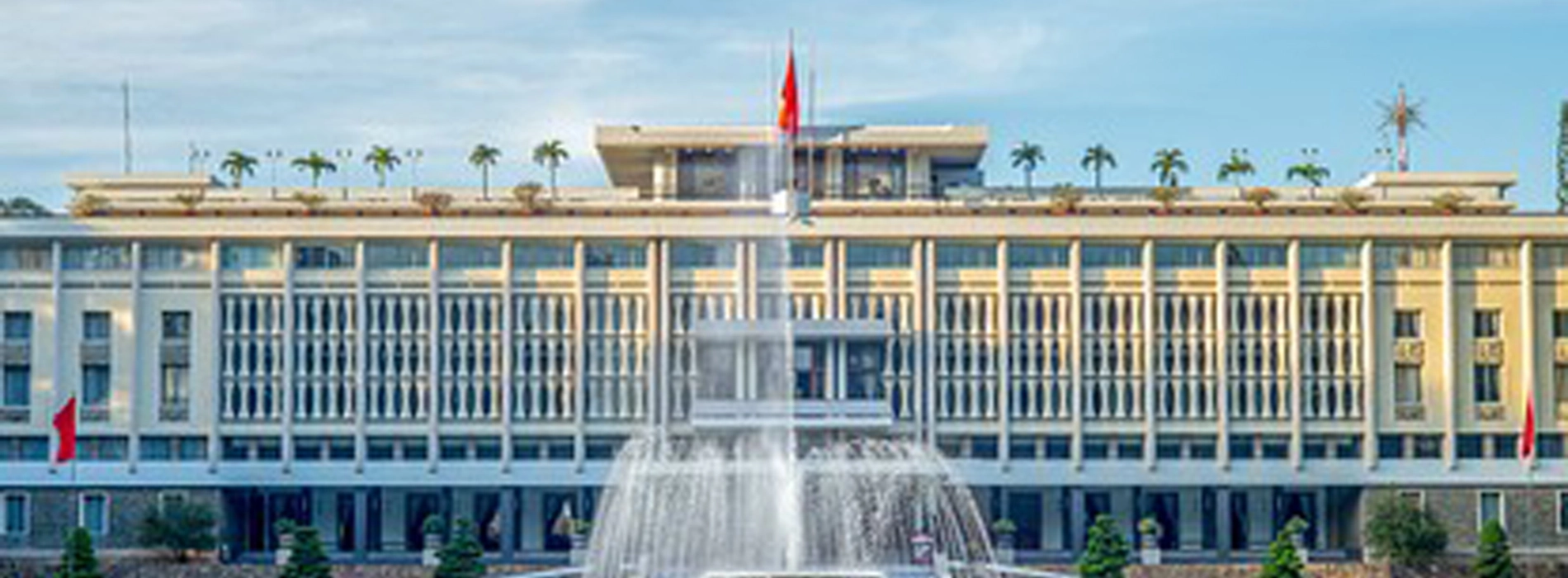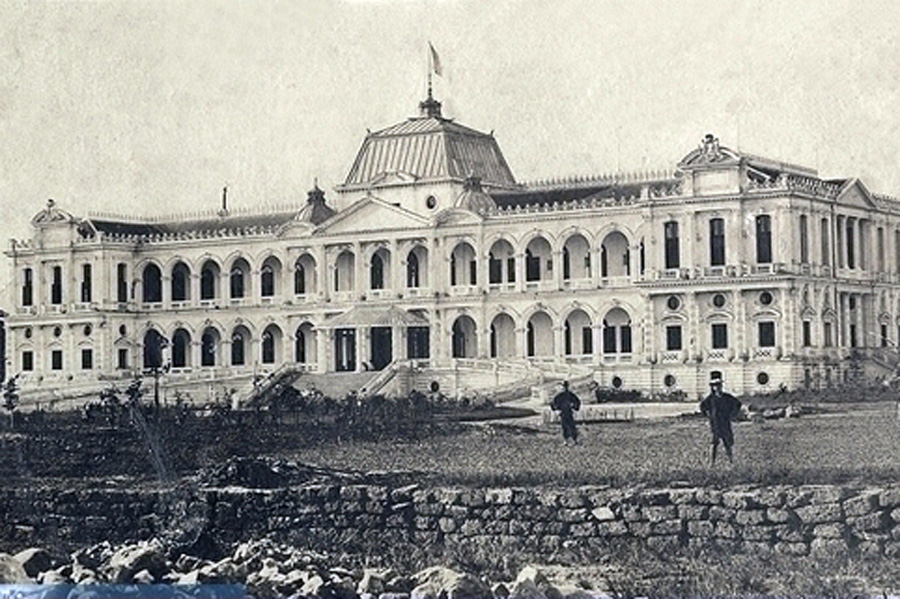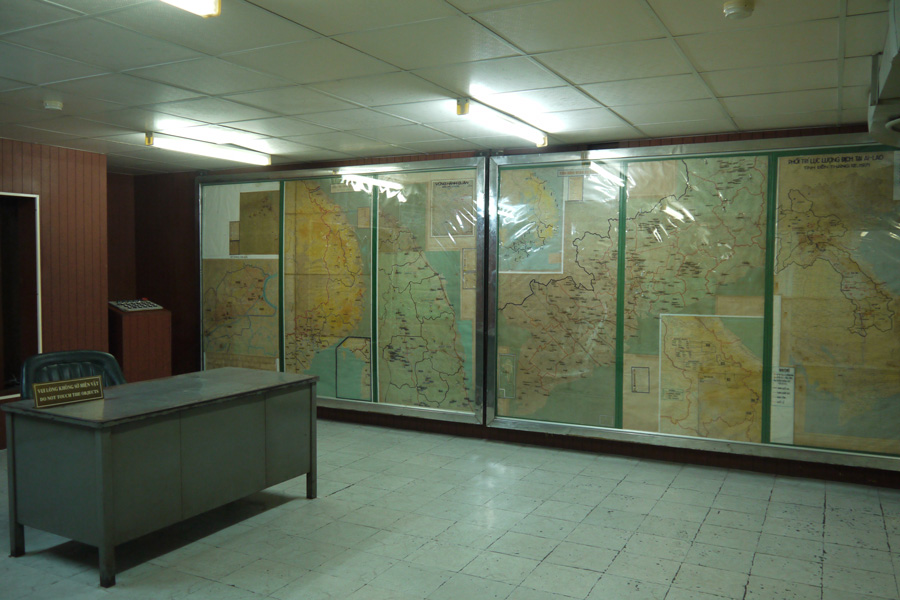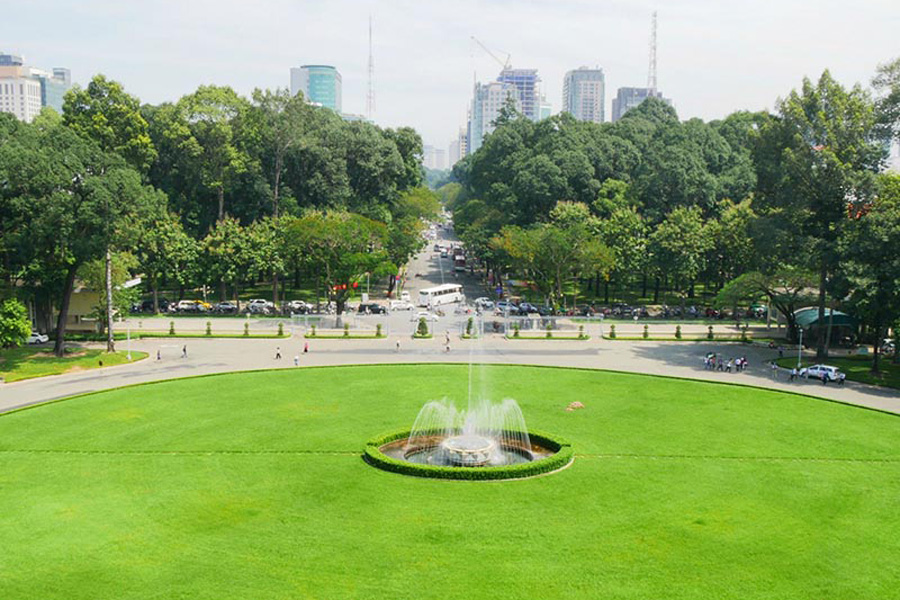Independence Palace

Independence Palace, also known as Reunification Palace, is a historic landmark located in Ho Chi Minh City, Vietnam. The palace holds significant historical and political importance, particularly in relation to the Vietnam War.
On April 30, 1975, the Vietnam War officially ended with the fall of Saigon. A North Vietnamese tank crashed through the gates of Independence Palace, marking the symbolic reunification of North and South Vietnam. The palace was then renamed Reunification Palace.
 Black and white photo of Independence Palace
Black and white photo of Independence Palace
Today, Independence Palace is a popular tourist attraction and a symbol of the country's reunification. Visitors can explore the well-preserved interior, including the president's living quarters, meeting rooms, and communication facilities. The architecture of the building is notable for its 1960s and 1970s design, reflecting the era in which it was constructed.
Independence Palace stands as a reminder of Vietnam's tumultuous history and its journey toward reunification and independence. The site is also a museum, offering insights into the events that unfolded there during the Vietnam War.
The original building on the site was the Norodom Palace, constructed in the late 19th century. However, in 1962, during the Vietnam War, it was bombed by dissident pilots of the South Vietnamese Air Force. In its place, a new modernist building was constructed and completed in 1966. This new structure served as the residence and workplace for the President of South Vietnam.
(1).jpg) Panoramic photo of the Independence Palace
Panoramic photo of the Independence Palace
Responding to the damage, a new architectural masterpiece designed by Ngo Viet Thu emerged in 1966, embodying the aspirations of an independent South Vietnam. This modernist edifice served as the official residence and workplace for President Nguyen Van Thieu. Nevertheless, the palace's zenith moment occurred on April 30, 1975, as North Vietnamese forces overran the site, symbolically breaching its gates with a tank and marking the reunification of North and South Vietnam. The palace, subsequently renamed Reunification Palace, now stands as a living testament to the nation's arduous journey towards unity. As a museum, it preserves the architectural splendor of the 1960s and 1970s, offering visitors a poignant exploration of the pivotal events that shaped Vietnam's quest for independence and sovereignty.
See more: 12 Days Foodie & Gourmet of Vietnam
The best time to visit Independence Palace, or Reunification Palace, in Ho Chi Minh City, Vietnam, is during the dry season, which typically runs from November to April. This period is characterized by lower humidity, minimal rainfall, and more comfortable temperatures, making it more enjoyable for outdoor activities and sightseeing.
Specifically, the months of December to February are considered the peak of the dry season, with cooler temperatures and a lower chance of rain. During this time, you can expect sunny days, making it ideal for exploring the historical sites in and around the city.
Independence Palace, also known as Reunification Palace, boasts several highlights that offer visitors a glimpse into the history and significance of the site. One of the top highlights is the War Room, a pivotal space where key decisions were made during the Vietnam War. Here are some notable features of Independence Palace:
1. War Room: The War Room is a central highlight, showcasing the strategic planning and decision-making process during the Vietnam War. Visitors can see the maps, communication equipment, and furnishings used by South Vietnamese officials during this critical period.
 War Room in Independence Palace
War Room in Independence Palace
2. Presidential Living Quarters: Explore the private living quarters of the President of South Vietnam, including bedrooms, sitting areas, and personal spaces. The preserved interior provides insight into the lifestyle of the political leadership during the 1960s and 1970s.
3. Conference Rooms: Independence Palace features various conference rooms where diplomatic meetings and official events took place. The rooms are maintained with period-specific furniture and decor, giving visitors a sense of the political atmosphere of the time.
.jpg) Meetings rooms in the Reunification Palace
Meetings rooms in the Reunification Palace
4. Helipad: The rooftop helipad is a significant part of the palace's history. It was from this helipad that the last helicopter left during the fall of Saigon in 1975, marking the end of the Vietnam War.
 Helicopter on the roof of The Reunification Palace
Helicopter on the roof of The Reunification Palace
5. Communication Center: The palace's communication center showcases the technology used for official communication during the Vietnam War era. Visitors can see old communication equipment and gain an understanding of the challenges faced by the South Vietnamese leadership.
6. Grounds and Gardens: The well-maintained grounds and gardens surrounding the palace contribute to its overall charm. Visitors can take a leisurely stroll and enjoy the greenery and architectural design.
 Grounds and Gardens in Independence Palace
Grounds and Gardens in Independence Palace
To reach Independence Palace in Ho Chi Minh City, visitors have several convenient options for transportation. Taxis and ride-sharing services like Grab are readily available and can be hailed by using a smartphone app or flagging down a cab on the street. Motorbike taxis, known as xe ôm, offer an adventurous and quick way to navigate the bustling streets of the city, with negotiable fares.
For those who prefer public transportation, the city's bus system provides an economical choice, though it may involve navigating crowded conditions. Alternatively, visitors staying in central districts like District 1 may find that a leisurely walk to Independence Palace is a feasible and enjoyable option. Traditional cyclos, three-wheeled bicycle taxis, are also available for a unique and culturally immersive experience.
Finally, for added comfort and flexibility, car rentals with drivers or self-driving options are available for those exploring the city at their own pace. Regardless of the mode of transportation chosen, Independence Palace is a well-known landmark, making it easily accessible for both locals and tourists alike.